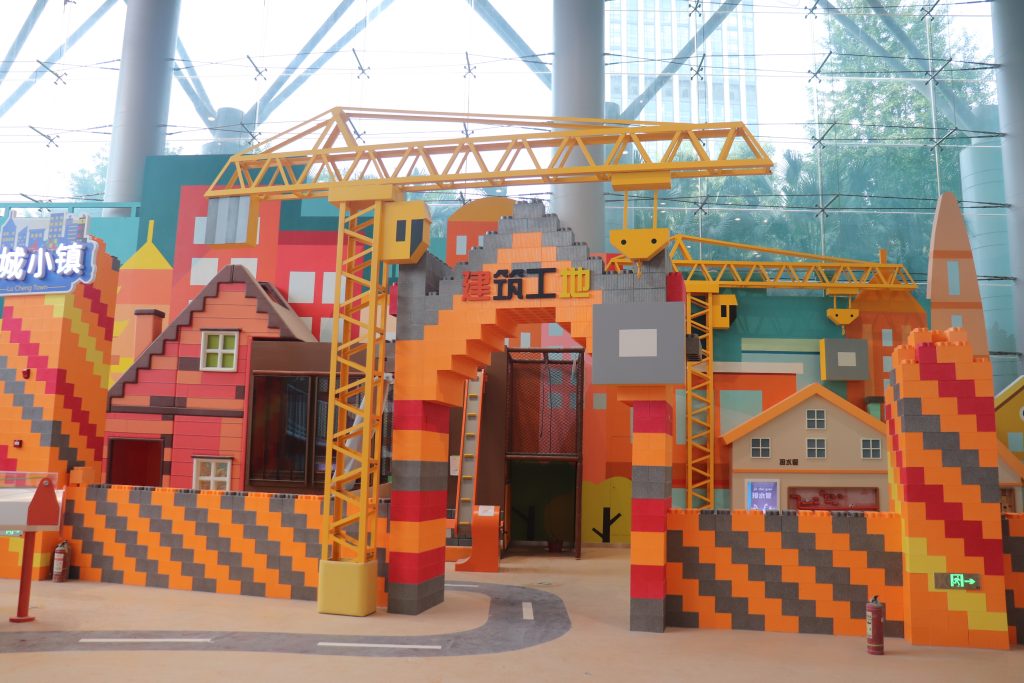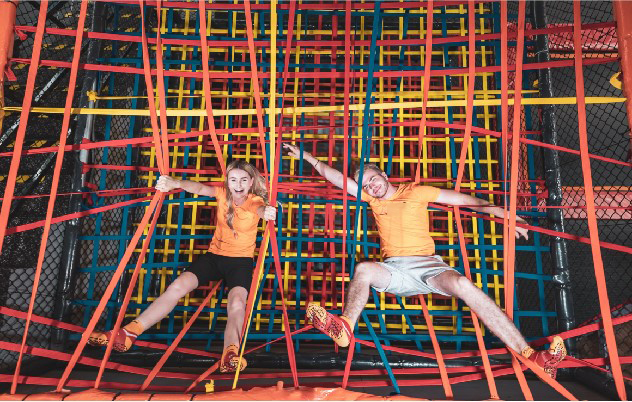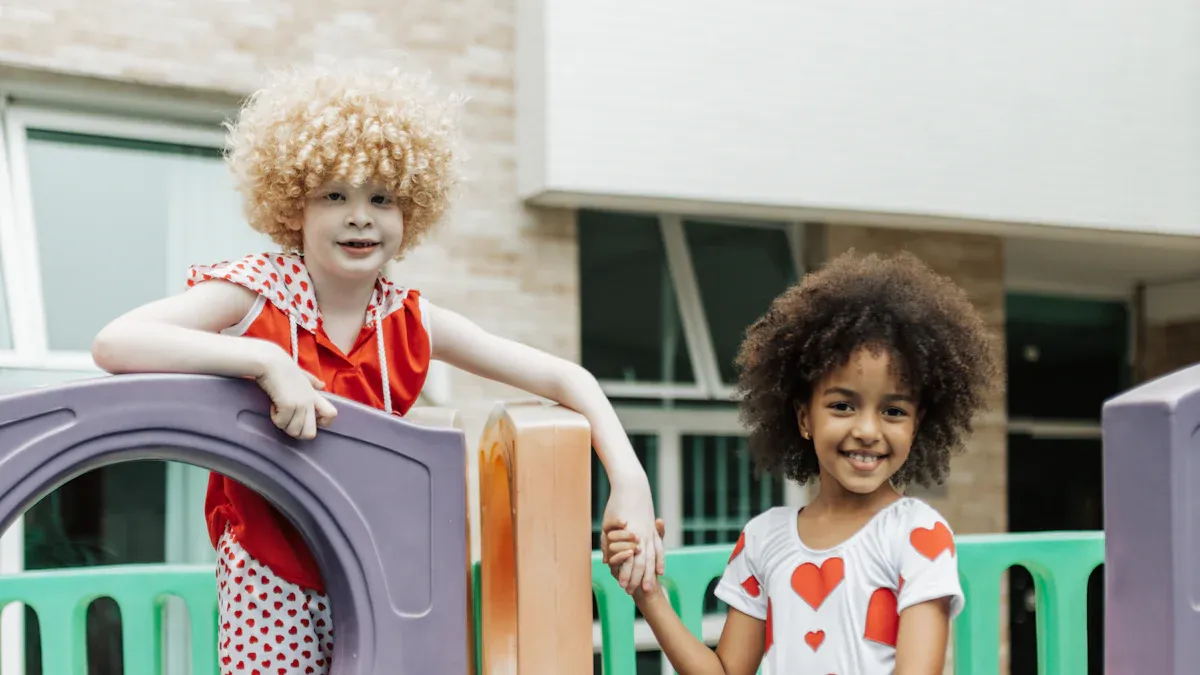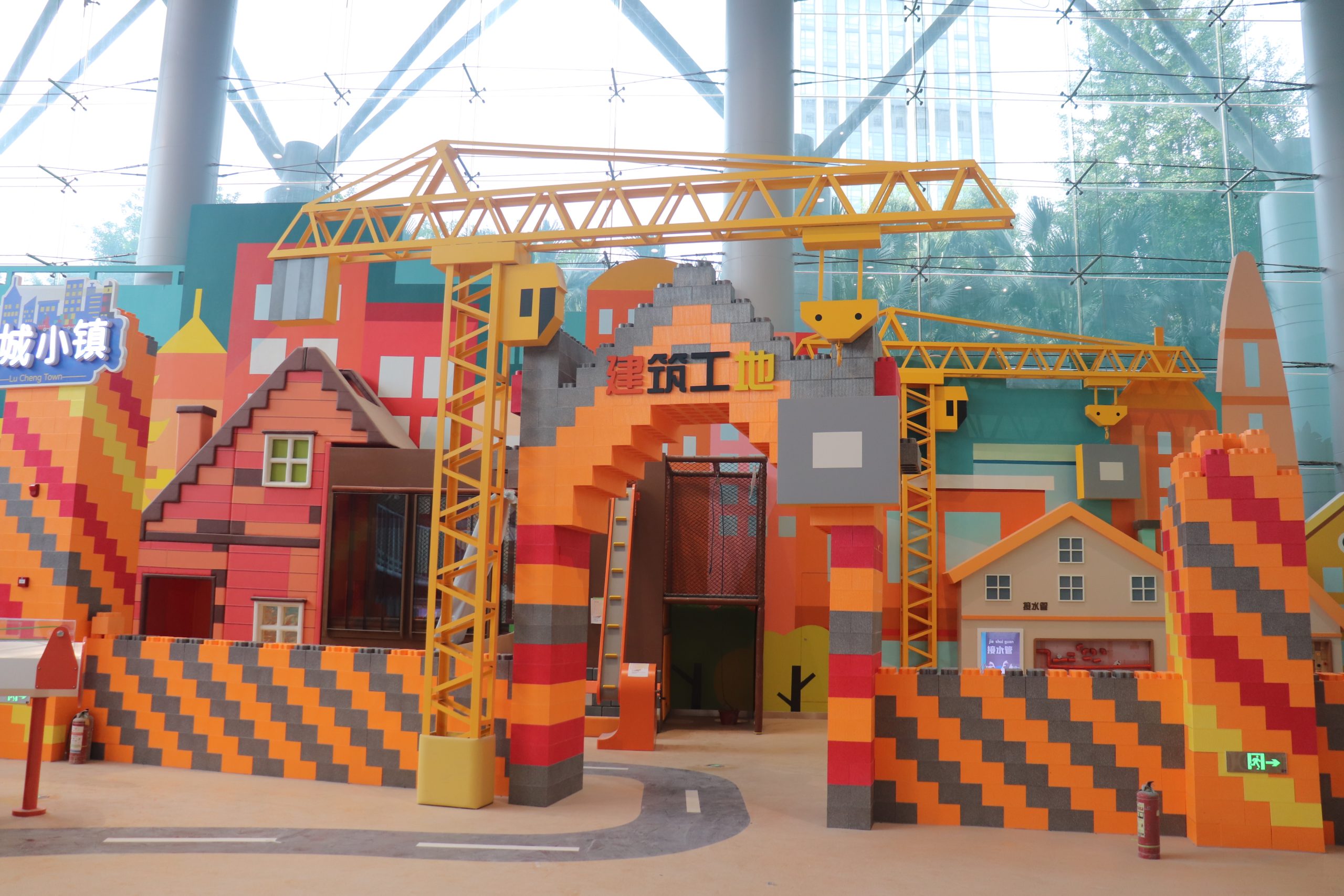
When you choose children’s indoor playground equipment, put safety first. Pick certified options that match your space and budget. Think about what kids in your area need at their age. You can make smart choices if you follow a few simple steps.
Remember, understanding your audience helps you create a space where kids play, learn, and stay safe.
Key Takeaways
- Always pick playground equipment that is certified safe. Check for certifications like EN1176 and ASTM. These show the equipment meets safety rules.
- Choose equipment that fits the age of the kids. Make different play areas for toddlers, preschoolers, and older kids. This helps keep everyone safe and interested.
- Use strong and safe materials to build the playground. Pick materials like coated metal, plastic, and rubber. These help stop injuries and last a long time.
- Plan the playground layout with care. Make clear paths and fun zones. This helps all kids move around easily and play together.
- Check and fix the equipment often. Quick repairs and regular checks keep the playground safe and fun for kids.
Safety Standards

Safety is the most important thing when picking indoor playground equipment. Kids should have fun, but they must also stay safe. There are some key things to think about for safety in any indoor playground.
Certifications
You will see different safety certifications when you look for playground equipment. These certifications mean the equipment follows strict safety rules. Here are some common ones:
| Certification | Description |
|---|---|
| EN1176 | European standard for playground equipment safety. |
| ASTM | American standard for playground equipment safety. |
| SGS | Global standard for safety and quality assurance. |
Some standards are for special things. ASTM F1918-12 is for indoor playgrounds. It checks things like soft floors and safe heights. EN 1176 works for both indoor and outdoor playgrounds. It covers many types of equipment. TUV is a group that checks if your equipment meets these rules.
You might also see other standards. AS 4685.1-2014 is about general safety and testing. AS/NZS 4486.1:1997 is about how to install and take care of equipment. These rules help you make sure your playground is safe for everyone.
Tip: Always ask your supplier to show you proof of certification. Certified equipment means you can trust that it is safe.
Safe Materials
The materials in your indoor playground are very important. You want them to be strong, safe, and easy to clean. Here are some good choices:
- Metal: Very strong, but it can get hot or rusty. Coated metal helps stop burns and rust.
- Plastic: A top pick for indoor playgrounds. It does not get too hot and is easy to care for.
- Wood: Looks nice and feels warm. Make sure it is treated so it does not splinter or rot.
- Rubber: Great for soft floors and padding. Rubber helps protect kids if they fall.
Picking the right materials helps stop injuries. Soft mats or foam padding can help if a child falls. You should also look for smooth edges and surfaces that are easy to clean.
Note: Good materials last longer and keep your playground looking nice. They also make cleaning and fixing things much easier.
When you use safe standards and good materials, kids can play without worry. Parents will also feel better about letting their kids play there.
Age-Appropriate Choices
When you make an indoor playground, you want kids to feel happy and safe. The best way is to pick equipment for each age group. Kids change a lot as they grow. Their skills and interests are different every year. If you choose the right equipment for their age, they can play, learn, and stay safe.
Developmental Needs
Kids of different ages have different skills and likes. Babies and toddlers need simple things to help them crawl and stand. They also like to touch and explore. Preschoolers like to pretend and try new things. School-age kids want harder challenges and to play with friends. If you know what each group needs, you can pick the best features for your playground.
Here’s a quick look at what to focus on for each age group:
| Age Group | Developmental Focus | Equipment Suggestions |
|---|---|---|
| Toddlers and Preschoolers (6 months – 5 years) | Early motor skill development, sensory stimulation, imaginative play | Activity panels, crawl tubes, low slides, playhouses, sand and water play stations |
| School-Age Children (5 – 12 years) | Advanced motor skills, challenging play, social interactions | Complex climbing structures, rope ladders, monkey bars, tire swings, basketball hoops, outdoor games |
| Teenagers (12 years and above) | Endurance, strength, coordination, team-building experiences | Outdoor gym apparatus, basketball hoops, soccer goals, skate parks, outdoor table games |
Toddlers and preschoolers need soft and simple equipment. School-age kids like to climb, swing, and play games with others. Teenagers want activities that help them get stronger and work as a team. If you match the equipment to each group, all kids can have fun and grow.
Tip: When you pick indoor playground equipment, think about what skills kids are learning at each age. This helps you make a space that helps them grow and keeps them interested.
Equipment for Age Groups
You want every child to feel safe and included in your playground. The best way is to make separate areas for each age group. This helps kids find what they like and keeps them safe.
Let’s break down what works best for each group:
| Age Group | Recommended Equipment | Benefits |
|---|---|---|
| Toddlers | Infant swings, toddler climbing structures | Supports crawling and developmental milestones |
| Preschoolers | Age-appropriate play equipment | Encourages safe play and social interaction |
| School-age kids | Indoor jungle gyms | Promotes physical activity and skill development |
Each area can have special features to make it safer and more fun. For example, a toddler area can have soft floors, small slides, and safe tunnels. These help little kids play without getting hurt. The main area for older kids can have trampolines, ball pits, and climbing structures. These help kids build balance, speed, and imagination.
Here’s a quick table to show how different features help each group:
| Age Group | Features | Benefits |
|---|---|---|
| Toddler Area (1–3) | Soft-padded flooring, mini slides, baby-safe tunnels, sensory-friendly toys, enclosed zone | Ensures safety and encourages sensory exploration |
| Main Play Zone (4–10) | Trampolines, ball pits, multi-level climbing, slides, mazes, imaginative setups | Boosts balance, speed, and imaginative play |
- Toddlers should have their own play areas away from older kids to stop accidents.
- Age-appropriate equipment is important for safety and learning.
- Indoor gym equipment for toddlers helps them play safely with friends.
When you design your play center with different zones, parents can watch their kids more easily. You also lower the chance of accidents because kids use equipment made for their size. Soft floors and padded edges help stop injuries, which is very important.
Note: Good design and watching kids closely help balance fun and safety. This makes your indoor playground a favorite place for families.
Picking the right equipment for each age group helps every child feel welcome and challenged. You make a place where kids can play, learn, and grow. Parents will also feel good about their kids’ safety.
Indoor Playground Layout
Space Planning
You want your indoor playground to look open and fun. Good planning helps you fit more things to do. This lets more families visit and enjoy the space. If you use every spot well, you can have more guests. Kids will always have something to do. Your play center can make more money and stay busy.
Here are some smart ways to plan your play area:
- Follow all safety rules from your city and state. This keeps everyone safe.
- Use soft floors like mats or foam pads. These help protect kids if they fall.
- Check and fix equipment often. This stops accidents before they happen.
- Watch kids at all times. Staff or cameras help keep everyone safe.
- Make special areas for each age group. Toddlers need low climbing things. Older kids like harder equipment.
- Add themed zones and play structures with more than one level. These make your playground more fun and exciting.
- Put in interactive games. Technology gives kids new ways to play.
Good planning means you can let in more guests. Kids stay busy, even when it is not crowded. This helps your business grow.
Flow and Accessibility
A good playground lets kids move easily between activities. You want every child to feel welcome, no matter their ability. Clear paths and smooth flow help kids play safely and feel sure of themselves.
Here are some design ideas that work well:
| Design Strategy | Description |
|---|---|
| Universal design principles | Make sure every child can use the playground, no matter their ability. |
| Accessible pathways | Keep walkways at least 48 inches wide for wheelchairs and strollers. |
| Multi-sensory play elements | Use sounds, textures, and lights to engage all kids. |
| Quiet retreats | Create small spaces for kids who need a break from noise and action. |
| Clear wayfinding | Use colors and symbols so kids can find their way around easily. |
You can make your play area safe and friendly by using these tips. Kids will find things they like to do. Parents will feel good about their choices for indoor playground equipment. When you plan your layout well, you make a place where kids can play, learn, and grow.
Quality and Durability
When you pick indoor playground equipment, you want it to last. Good quality means fewer worries and more fun for kids. If you choose strong, well-built equipment, you save money and keep everyone safe.
Reliable Construction
You can spot reliable indoor playground equipment by looking at how it is made. Here’s a quick table to help you see what matters most:
| Construction Feature | Description |
|---|---|
| Durable Materials | Pressure-treated wood, steel, galvanized steel, aluminum, and recycled materials last longer. |
| Safety Surfacing | Shock-absorbing surfaces under equipment help protect kids if they fall. |
| Adherence to Safety Standards | Certifications like IPEMA show the equipment meets strict safety rules. |
High-quality indoor playground equipment usually lasts between 8 to 15 years with regular use. If you take care of it, it can last even longer. You want to make sure your investment stands up to lots of kids playing every day.
Common problems like wear and tear, poor installation, and rust can cause equipment to break. You can prevent these by checking for damage, using protective coatings on metal, and making sure everything is installed right from the start.
Maintenance
Keeping your indoor playground in top shape takes a little work, but it pays off. Here are some simple steps you can follow:
- Act fast if you see any damage. Fixing things right away stops bigger problems.
- Write down all repairs and checks. This helps you stay organized and protects you if there are any questions later.
- Make a plan for daily, monthly, and yearly tasks. Daily checks catch small issues before they grow.
- Book a yearly inspection with an expert. They can spot things you might miss.
You should also:
- Check for tears, holes, or loose parts and fix them right away.
- Inspect all hardware to make sure it is tight and safe.
- Look for loose wires, especially if you have any electrical features.
- Clean the playground often. Sweep, mop, and wipe down equipment so kids stay healthy.
If you follow these steps, your indoor playground will stay safe and fun for kids. Parents will trust your space, and you will get the most out of your investment in children’s indoor playground equipment. Good design and regular care keep the fun going year after year.
Fun and Engagement

When you make an indoor playground, you want kids to feel excited. The right equipment and creative ideas can make your space special. Families will want to come back again and again. Let’s see how you can make your playground more fun for everyone.
Variety of Equipment
Kids like having choices. If you have both old and new play equipment, kids will want to return. Swings and slides are classic favorites. You can also add themed play zones or things you can change. These options help your playground stand out in your community.
Here’s a table that shows how different features change play:
| Feature | Description |
|---|---|
| Themed Play | Lets kids use their imagination and be creative. |
| Customizable Elements | Lets you change the playground to fit your community. |
| Sustainable Practices | Uses earth-friendly materials and teaches kids about the planet. |
| Challenging Features | Lets kids try new things and learn new skills. |
| Advanced Safety Features | Uses new technology to keep everyone safe, so parents feel calm. |
You can also add soft play areas for younger kids. These make the playground safe and fun for all ages.
Interactive Features
Kids want more than just things to climb or slide on. They like to touch, move, and explore. Interactive features make your playground feel exciting. You can use bright colors, fun themes, and panels that kids can push or spin. These details keep kids interested and help them play together.
Popular interactive features include:
- Soft play items like mats, foam blocks, and inflatable balls
- Climbing structures with ladders and slides
- Ball pits for safe jumping and group play
- Interactive games, like video games or virtual reality
Themes and colors are important too. They help kids imagine new worlds. Interactive panels mix movement and thinking, so kids use their bodies and minds.
| Aspect | Influence on Engagement and Enjoyment |
|---|---|
| Themes | Pull kids into new worlds and spark their imagination. |
| Colors | Make the space bright and help kids play longer. |
| Interactive Panels | Mix action and problem-solving, helping kids learn and connect. |
If you use variety and interactive design, your playground will be a place where kids laugh, learn, and make memories. Parents will see the difference and trust your space for safe, happy play.
Budget Planning
Cost vs. Value
When you plan your indoor playground, you want to get the most for your money. It helps to know what you might spend before you start. Here’s a quick look at average costs for commercial indoor playground equipment:
| Description | Cost (USD) per m² | Example Total Cost for 200m² |
|---|---|---|
| FOB cost (height < 3.2m) | 140 | 28,000 (2 levels) |
| FOB cost (height 4.5m) | 200 | 40,000 (3 levels) |
| Installation (100-150 m²) | 2,400 | N/A |
| Installation (500-700 m²) | 6,600 | N/A |
You might wonder if higher-priced equipment is worth it. Here’s what you get when you spend more:
- You get stronger materials that last longer, even with lots of kids playing every day.
- Safety is better because top brands follow strict rules.
- The design and features are often more exciting for kids.
If you want your playground to last and keep kids safe, it makes sense to look at the long-term value, not just the price tag.
Investment Tips
Smart planning helps you make the most of your budget. Try these tips to get started:
- Think about all the costs, not just the first price. This includes repairs, cleaning, and upgrades over time.
- Pick equipment that fits your business and how many kids you expect each day.
- Check for safety labels, strong parts, and good warranties before you buy.
You can also make your project easier by:
- Writing a business plan that shows your ideas and goals.
- Doing research to see what kids in your area like best.
- Looking for loans or grants that help new businesses.
- Making sure you have at least 25% of your total budget ready before you start.
Tip: Careful planning and smart choices help you build a playground where kids have fun and stay safe, while you get the best value for your money.
You can make a safe and fun indoor playground if you follow some easy steps. Pick equipment for each age group. Use soft play for toddlers. Choose climbing walls for older kids. Make sure all equipment meets safety standards. Use strong materials that last. Add ramps so everyone can join in. Include sensory areas for all kids. Check your equipment often. Fix things when needed.
If you balance these things, you get great results:
| Factor | Why It Matters |
|---|---|
| Safety | Protects kids while they play. |
| Age-appropriateness | Matches activities to kids’ skills and interests. |
| Layout | Helps kids move and interact easily. |
| Quality | Makes your playground last longer. |
| Engagement | Keeps kids active and happy. |
| Budget | Lets you get the most value for your money. |
Careful planning helps you build a place for kids to play, learn, and grow. You can trust yourself to make good choices for your indoor playground!
FAQ
What safety certifications should I look for?
You should check for certifications like EN1176, ASTM, or TUV. These show the equipment meets strict safety rules. Always ask your supplier for proof. Certified equipment helps you trust that kids will play safely.
How do I keep my indoor playground clean?
Set up a daily cleaning routine. Wipe down surfaces, sweep floors, and sanitize high-touch areas. Use safe cleaning products. Clean equipment keeps kids healthy and parents happy.
Can I mix equipment for different age groups?
You can, but create separate zones for each age group. This keeps play safe and fun for everyone. Use signs or colors to show which area is for which age.
How often should I inspect the equipment?
Inspect your playground every day before opening. Look for loose bolts, worn parts, or damage. Fix problems right away. Schedule a professional inspection once a year for extra peace of mind.
